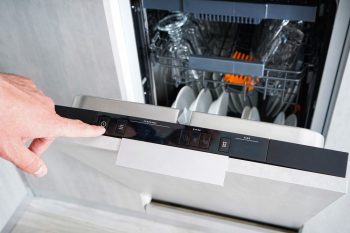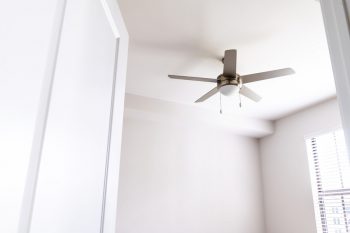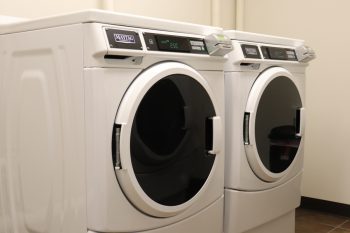
A Generac Power Washer is a valuable tool for cleaning decks, patios, and other outdoor areas. But what do you do when your power washer won’t start? This can be frustrating, especially if you’re in the middle of a cleaning job. In this comprehensive guide, we will explore the common reasons why your Generac Power Washer might not be starting and how to troubleshoot these issues.
Your Generac Power Washer might not start due to several reasons such as a dirty or faulty air filter, lack of or old fuel, spark plug problems, water in the fuel, or the choke being in the ON position. Check and clean the air filter, ensure there is enough fresh fuel, inspect the spark plug, drain and refill the fuel tank if there’s water, and check the choke position. If these steps don’t work, consult the owner’s manual or a professional. Regular maintenance can prevent these issues.
Common Reasons Why Your Generac Power Washer Won’t Start
There are several reasons why your Generac Power Washer might not start. Here are the most common ones:
- Dirty or Faulty Air Filter: A clogged air filter can restrict airflow to the engine, causing it to stall or not start at all.
- Lack of or Old Fuel: If there’s not enough fuel in the tank or the fuel is old and stale, the engine may not start.
- Spark Plug Problems: A loose spark plug wire connection, a bad spark plug, or carbon buildup on the spark plug can prevent the engine from starting.
- Water in the Fuel or an Excessively Rich Fuel Mixture: Water in the fuel can cause the engine to stall or not start.
- Choke in the ON position: If the choke is in the ON position, the engine may not start.
How to Troubleshoot a Generac Power Washer That Won’t Start
If your Generac Power Washer won’t start, here’s how you can troubleshoot and fix these common issues:
Dirty or Faulty Air Filter
- Check the air filter: Remove the air filter and check it for dirt and debris. If it’s dirty, clean it with warm soapy water, rinse it thoroughly, and let it dry completely before reinstalling it. If it’s damaged, replace it.
- Replace the air filter: If cleaning the air filter doesn’t help, you may need to replace it. You can find replacement air filters at most home improvement stores or online.
Lack of or Old Fuel
- Check the fuel level: Make sure there is enough fuel in the tank. If the fuel level is low, fill the tank with fresh fuel.
- Use fresh fuel: If the fuel in the tank is old or stale, drain it and refill the tank with fresh fuel. Consider using a fuel stabilizer to prevent future issues.
Spark Plug Problems
- Inspect the spark plug: Remove the spark plug and check it for damage or wear. If it’s damaged or worn, replace it.
- Check the spark plug wire connection: Make sure the spark plug wire is securely connected to the spark plug.
Water in the Fuel or an Excessively Rich Fuel Mixture
- Drain the fuel tank: If there’s water in the fuel, drain the fuel tank completely and refill it with fresh fuel.
- Adjust the carburetor settings: If the fuel mixture is too rich, adjust the carburetor settings according to the manufacturer’s instructions.
Choke in the ON Position
- Check the choke position: Make sure the choke is in the correct position (usually OFF) for starting.
Remember, if you’ve checked all these potential issues and your power washer still won’t start, it’s best to consult the owner’s manual for further troubleshooting steps or contact a professional for assistance.
Regular Maintenance and Care for Your Generac Power Washer
Regular maintenance and care can prevent many of the issues that cause a Generac Power Washer not to start. Here are some best practices:
- Perform routine maintenance: This includes checking and replacing the oil and oil filter, inspecting the spark plug, and checking the valve clearance regularly.
- Check the fuel and air filter before each use: Always ensure there is enough fresh fuel in the tank and that the air filter is clean before you start your power washer.
- Proper shutdown and storage: After each use, follow the correct shutdown procedure and store your power washer properly to prevent issues with starting next time.
- Winterize your power washer: If you live in a cold climate, use a pump shield to protect your pressure washer pump from cold damage.
By following these best practices, you can keep your Generac Power Washer in excellent condition and ensure its optimal performance for years to come.
Remember, always follow the safety guidelines listed in your operator’s manual and remove the spark plug wire before performing repairs. If you’re unsure about any of these steps or need further assistance, consult a professional or refer to your owner’s manual.
Frequently Asked Questions
What type of fuel does a Generac Power Washer use?
Generac Power Washers typically use unleaded gasoline. Always check your owner’s manual to confirm the correct type of fuel for your specific model.
How often should I replace the air filter in my Generac Power Washer?
It’s recommended to replace the air filter once every season or after 25 hours of use, whichever comes first. However, if you operate in a dusty environment, you might need to replace it more often.
What is a fuel stabilizer and why should I use it?
A fuel stabilizer is a substance that you add to the fuel. It prevents the fuel from degrading and forming a gum-like substance that can clog the carburetor and cause starting problems. If you don’t use your power washer regularly, using a fuel stabilizer can help keep the fuel fresh.
Why is it important to winterize my power washer?
Winterizing your power washer helps protect it from damage due to freezing temperatures. Water left in the pump can freeze and expand, potentially causing damage to the pump. Using a pump shield or antifreeze solution can help prevent this.
How can I tell if my spark plug is worn or damaged?
A worn or damaged spark plug might have a blackened tip, cracks in the porcelain insulator, or erosion of the electrode. If you notice any of these signs, it’s best to replace the spark plug.












